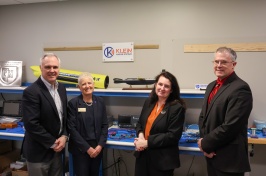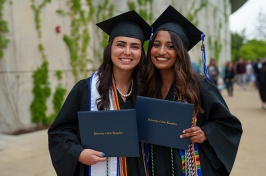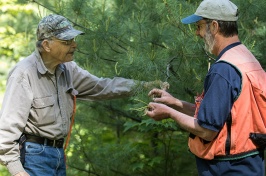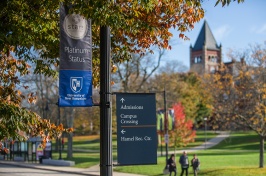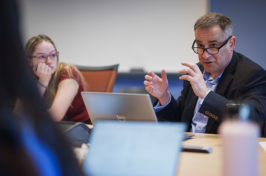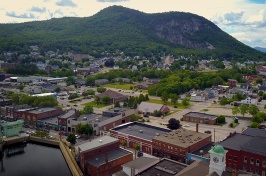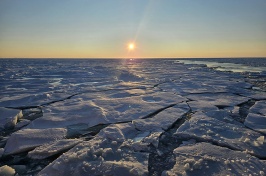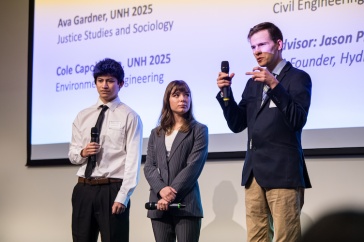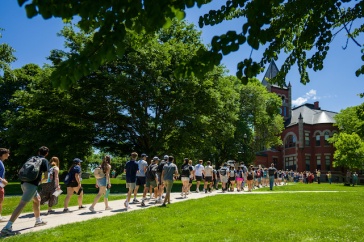|
|
When Astrida Schaeffer describes the smooth grey silk of a Victorian-era dress that has been knife-pleated on the cuffs and bodice, its bodice pleat edged with contrasting sea-green trim, you don’t have to actually see the garment to see it. Her knowledge of historic detail, her love of fabric, brings the dress to life.
Schaeffer combined that knowledge and love when she chose 25 garments and accessories from the period for the exhibit “Embellishments: Constructing Victorian Detail” running at the University Museum Sept. 14 through Dec. 14.
The exhibit borrows from the Irma Bowen Textile Collection, some 600 textile pieces donated to the university by Bowen, who collected samples of the clothing that she used in dressmaking technique classes she taught at UNH in the 1920s.
The Victorian-era garments and accessories on display in the “Embellishments: Constructing Victorian Detail” exhibit explore the aesthetics of 19th-century clothing design and how their embellishments were constructed.
“To embellish something, to transform it with decoration and then add more, is at the core of the Victorian sense of beauty,” says Schaeffer, guest curator for the exhibit. “Yet the fabulous effect is in fact the result of just a few simple design principles combined in a variety of ways. ‘Embellishments: Constructing Victorian Detail’ looks at what these principles are, and how they are applied, to help you see Victorian fashion in a new way.”
The first of these design concepts is self-trim, or using a garment’s own fabric to decorate itself. Deliberate color or texture contrast (or both) can then be added to enrich the effect. And finally, elements are repeated, combined, or layered upon each other, Schaeffer says. When applied to simple techniques such as ruching or gathers, pleating, bound edges, piping, appliqué, ribbon work, cord and braid work, and to materials such as passementerie or woven trims, the result is a visual feast.
Each of the mannequins in the show was custom made to support its historical garment safely and correctly for its specific style.
Schaeffer will present three programs in conjunction with the exhibit: a curator’s tour, an in-depth examination of three dresses, and a hands-on embellishments workshop. For more information about workshops and the exhibition, visit the University Museum’s website at www.izaak.unh.edu/museum.
The museum, located in the Dimond Library, is open Monday through Friday, 10 a.m. to 4 p.m. and Saturday noon to 4 p.m.
Originally published by:
Campus Journal










